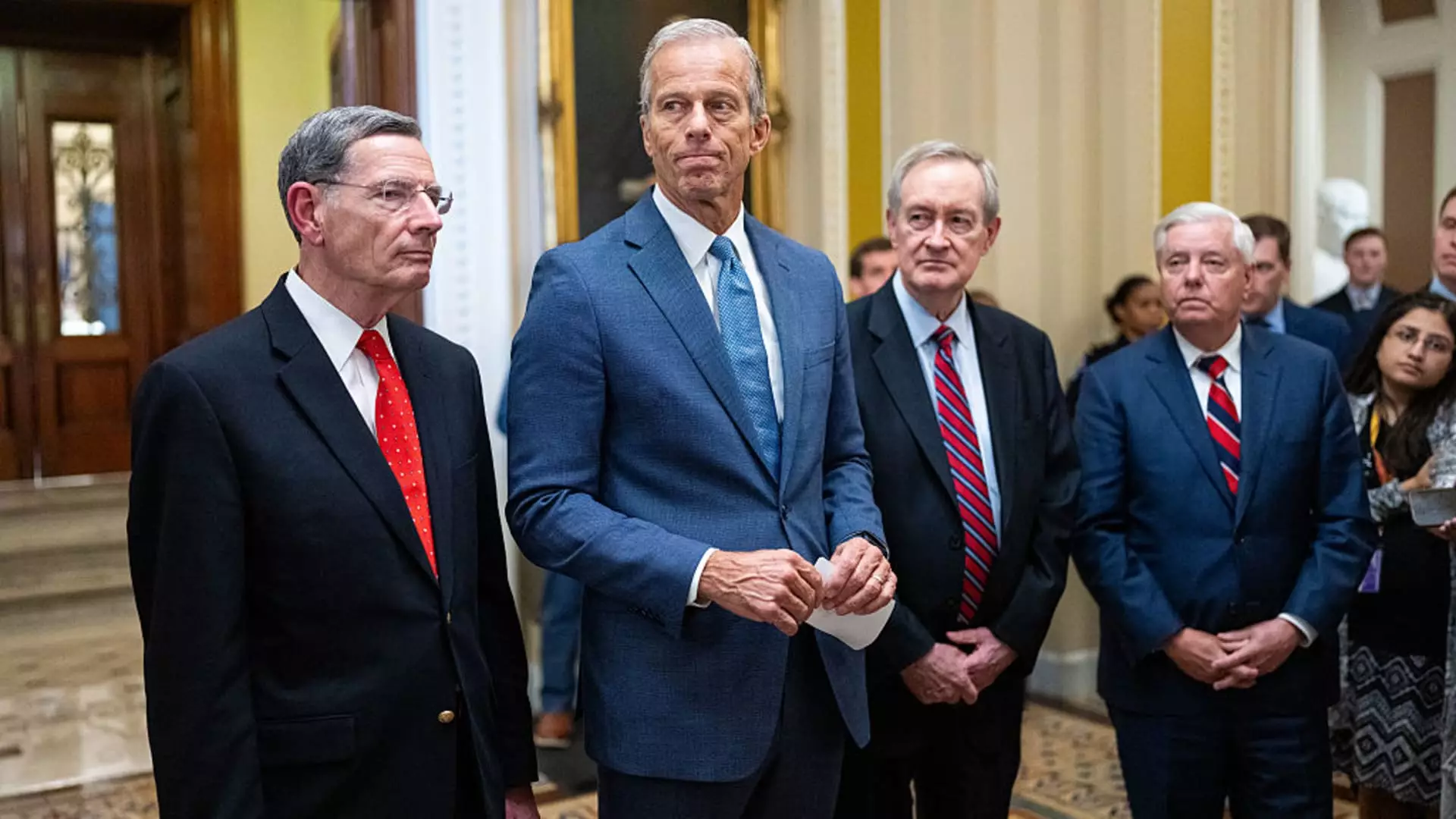The recent legislative push for sweeping tax cuts, championed vigorously by President Trump and his allies in the Senate, aims to paint a picture of economic relief and prosperity. Yet, beneath the glossy surface lies a stark reality: much of this supposed “tax relief” disproportionately favors the wealthy and leaves the middle and lower classes in the shadows. While headlines trumpet the introduction of new deductions—auto loans, tips, overtime pay, and senior credits—their actual impact reveals a hierarchy of benefits rooted deeply in income disparity. For those in higher tax brackets, these deductions translate into meaningful savings, effectively diminishing their tax burden. Conversely, families struggling on modest or low wages find little tangible benefit, their financial reality constrained by income thresholds and the very structure of the tax code.
The core problem is that these deductions, often structured as “above-the-line” benefits, are limited by substantial thresholds. For instance, even if a senior citizen deducts $6,000 on their taxes, this advantage is negligible if their income is already low, especially considering the standard deduction already provides a sizable benefit to lower-income households. The notion that tax cuts create immediate economic mobility for the underserved ignores the data: a significant portion of tipped workers, who often subsist on minimum wages, do not owe enough taxes to benefit from these deductions at all.
The Illusory Power of Deductions in Deepening Inequality
Tax deductions are often marketed as tools of middle-class empowerment. Yet, their real power resides with higher earners who can itemize and benefit from a deduction in their marginal tax rate’s bracket. For example, a household in a 37% tax bracket retrieves more value from a $1,000 deduction than someone in a 10% bracket. This built-in advantage systematically widens the gap between the affluent and the working class, perpetuating inequality rather than alleviating it.
The limitations become even clearer when scrutinizing specific deductions like car loan interest. For most consumers, a typical car loan does not approach the $112,000 needed to maximize a $10,000 deduction. Thus, the intended benefit remains largely nominal for the average household. Meanwhile, these provisions are framed politically as “tax cuts for all,” but in reality, they are designed to incentivize behaviors—like auto loans or tips—that serve the preferences of higher-income individuals. The legislation’s temporary nature further underscores its ephemeral promise: these benefits are projected to vanish once 2028 hits, leaving many to wonder if any real progress has been achieved or merely short-term gains exploited for political capital.
Tax Credits: A More Equitable Approach—But Still Flawed
Advocates often favor tax credits over deductions because credits apply equally across income brackets, offering more direct relief to low- and middle-income families. Yet, even this more equitable mechanism faces hurdles. The Child Tax Credit, for example, has been partially refundable, but millions of children in low-income families still miss out due to complex eligibility rules and income thresholds. The proposed bill’s plan to elevate the maximum child tax credit to $2,200 is a positive step, but it remains a symbolic gesture unless coupled with measures that target those most in need.
Furthermore, refundable credits—like the Earned Income Tax Credit—are designed to compensate for low wages and high living costs. However, these are often loser-points in political battles, with many low-income families not claiming them due to lack of awareness or complex filing requirements. This systemic oversight reveals that, even with well-intentioned policies, the framework is insufficiently inclusive. It’s a reflection of a broader societal attitude—picturing tax relief as a privilege for the affluent rather than a necessary instrument for genuine economic equality.
The Political and Economic Fallout of Skewed Tax Policies
This legislative effort underscores a fundamental flaw: it prioritizes the interests of higher-income elites under the guise of “middle-class benefits.” The political narrative suggests that tax cuts will stimulate growth and buoy the economy, but data paints a different story. The proposed $4 trillion in net tax cuts often lack targeted support for crucial social services and programs that disproportionately benefit lower-income populations.
Economically, this approach risks fostering a cycle where wealth becomes increasingly concentrated, undermining the stability of a balanced social fabric. The temporary nature of many of these deductions signals that they serve more as political tokens than genuine solutions. They divert attention from the need for structural reforms—such as raising the minimum wage, expanding accessible health care, or improving education—that could fundamentally empower those at the margins.
Moreover, the overarching strategy seems to rely heavily on tax incentives rather than direct investments. This reliance on deductions and credits—rather than policy initiatives—mirrors a misplaced faith in the trickle-down effect, which has historically failed to deliver for the ordinary worker. It’s a flawed paradigm that assumes wealth redistribution can be effectively accomplished through loopholes and breaks, rather than direct programs that guarantee economic fairness.
The latest push for tax cuts exposes a recurring theme: the promise of broad-based relief is a facade, masking policies that primarily serve the wealthiest. For middle-income households and those on the economic margins, the potential benefits from these deductions are limited, inconsistent, and often purely illusionary.
In my view, a truly progressive approach would recognize the inherent limitations of deductions for low earners and shift focus toward direct supports—such as expanding refundable tax credits—and reforms that boost wages and social safety nets. Until then, this legislation remains another chapter in a long history of using tax policy as a tool for rhetoric rather than genuine redistribution, deepening societal divides under the pretense of fairness. True economic justice demands that policies prioritize the needs of the many over the ambitions of the few, rather than hiding behind the fragile veneer of tax breaks that mostly benefit the privileged.

